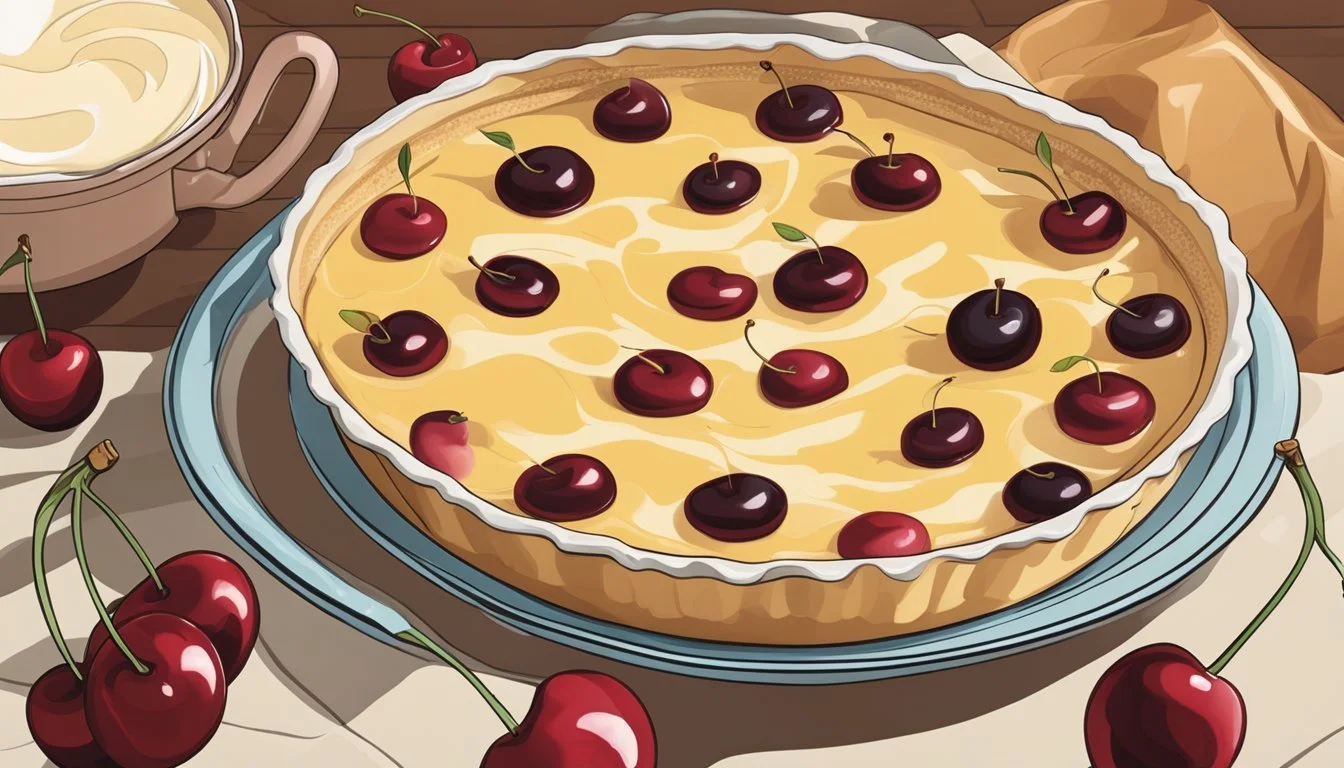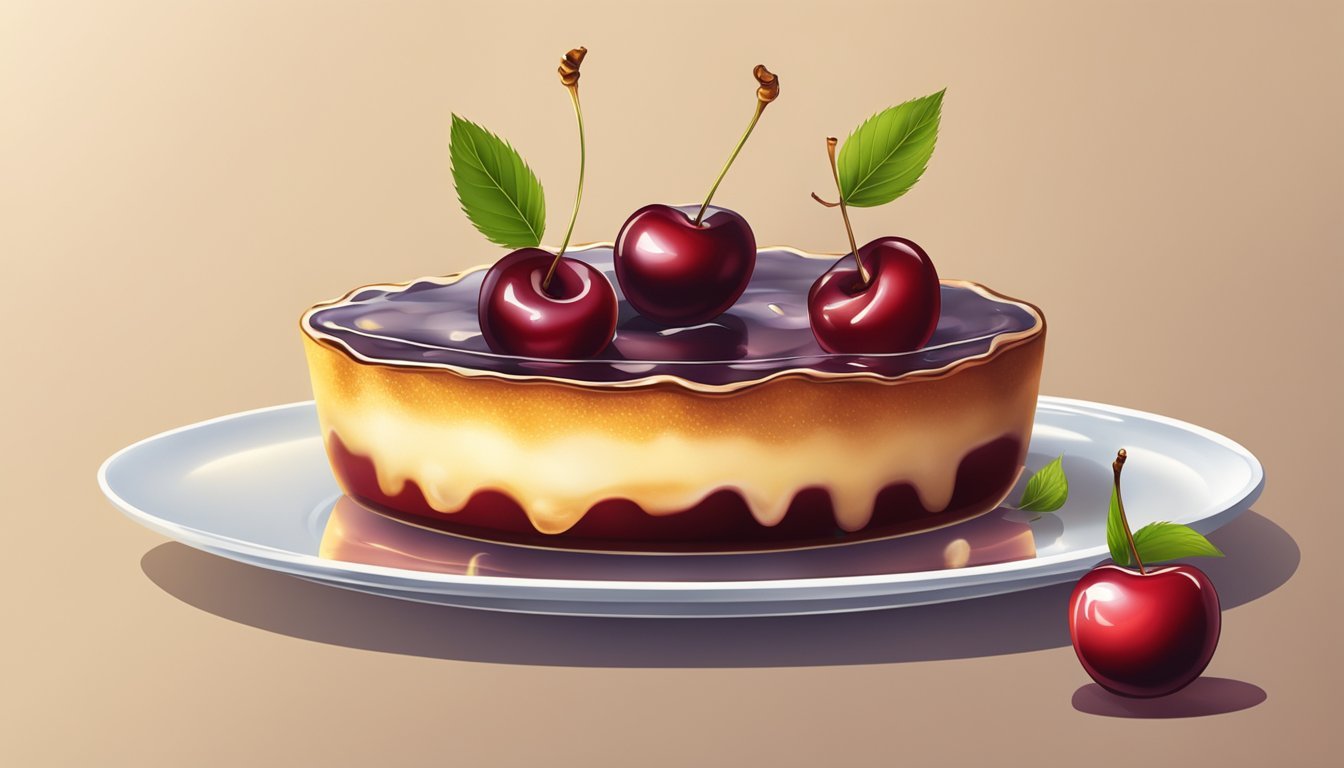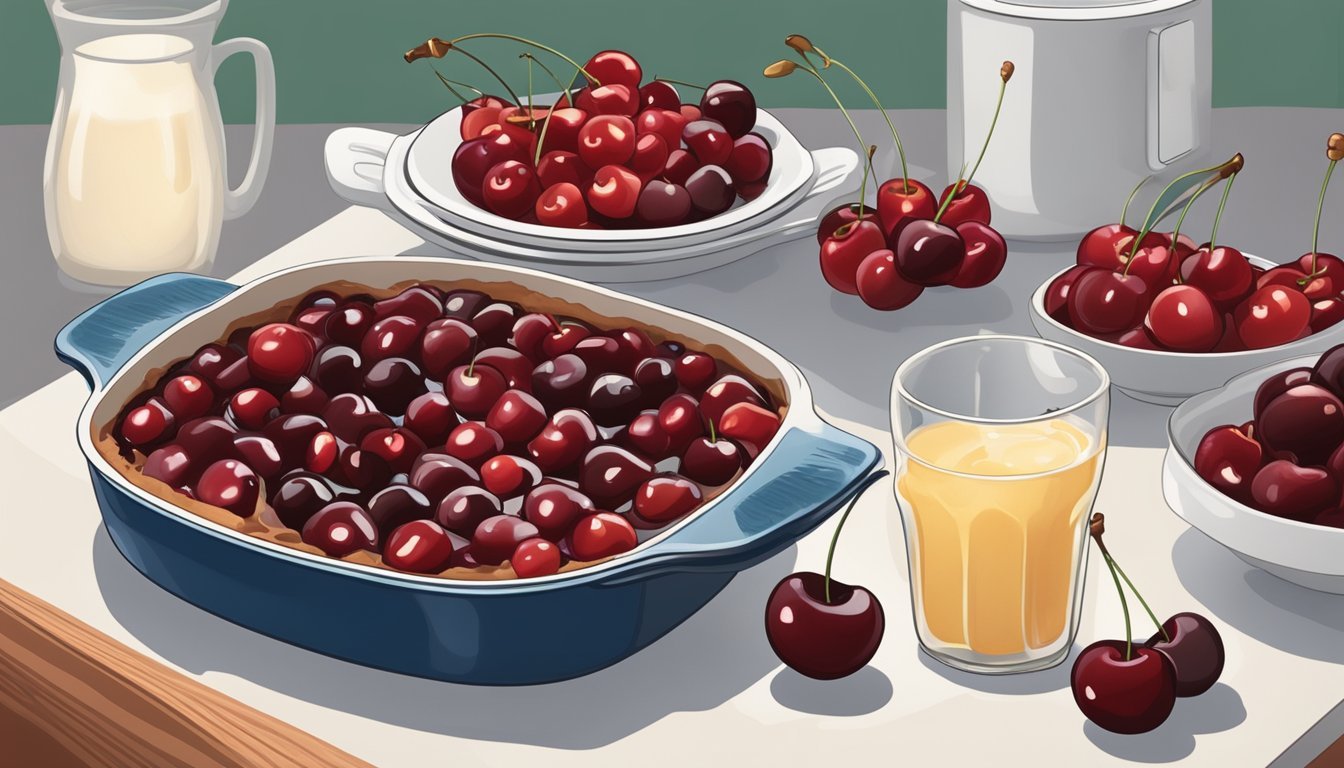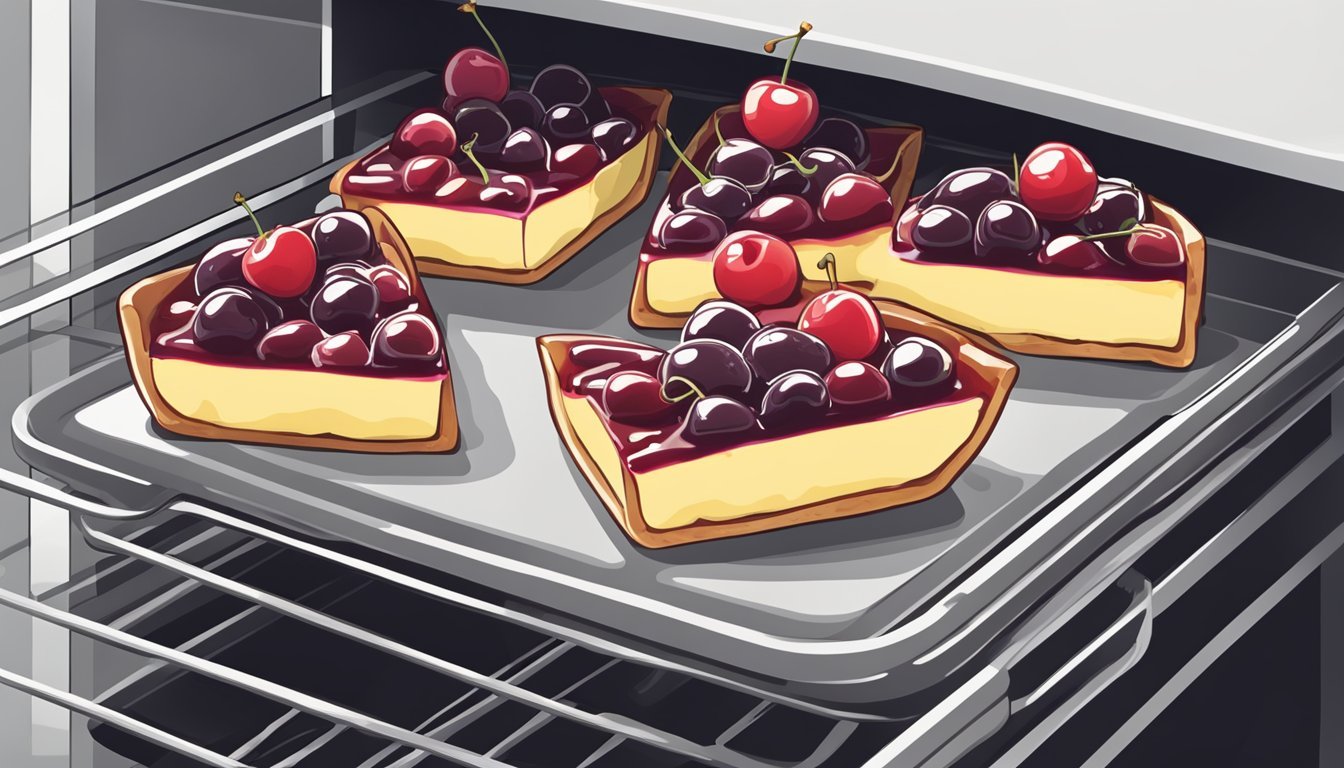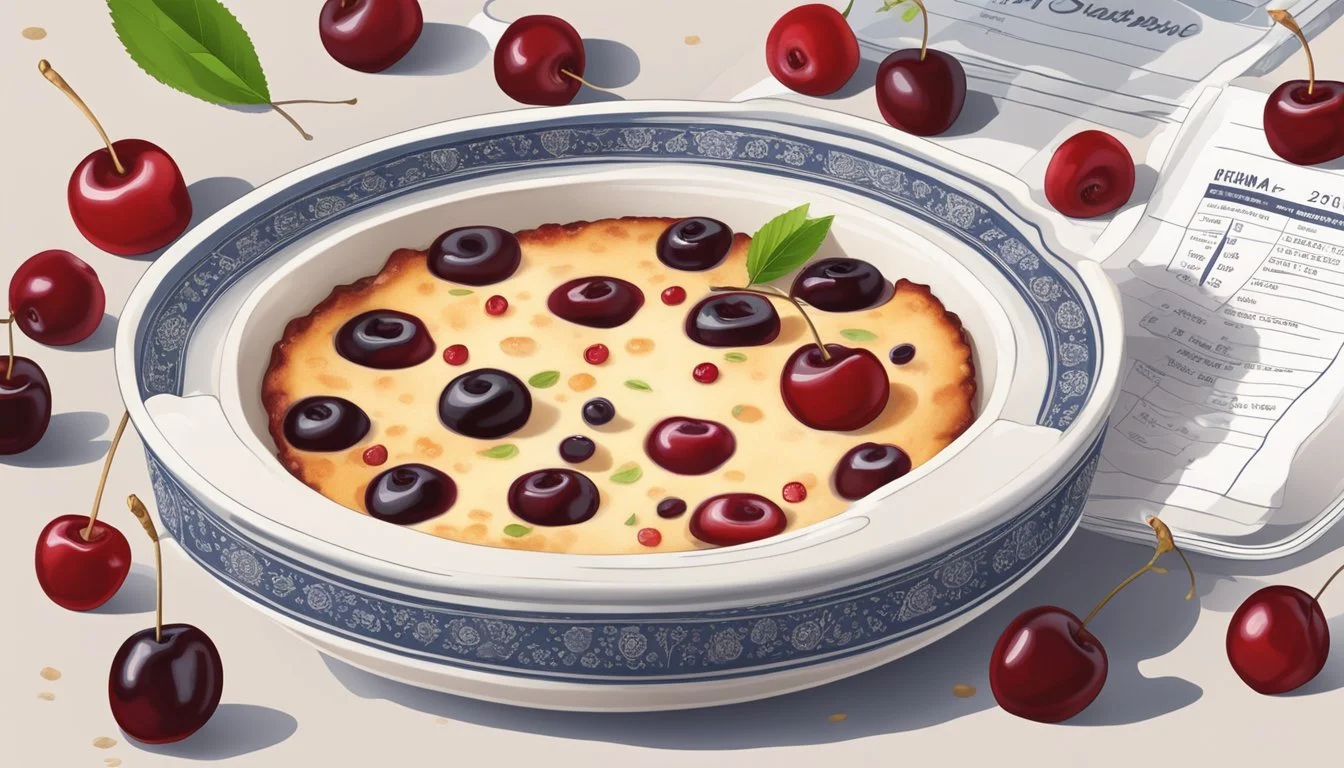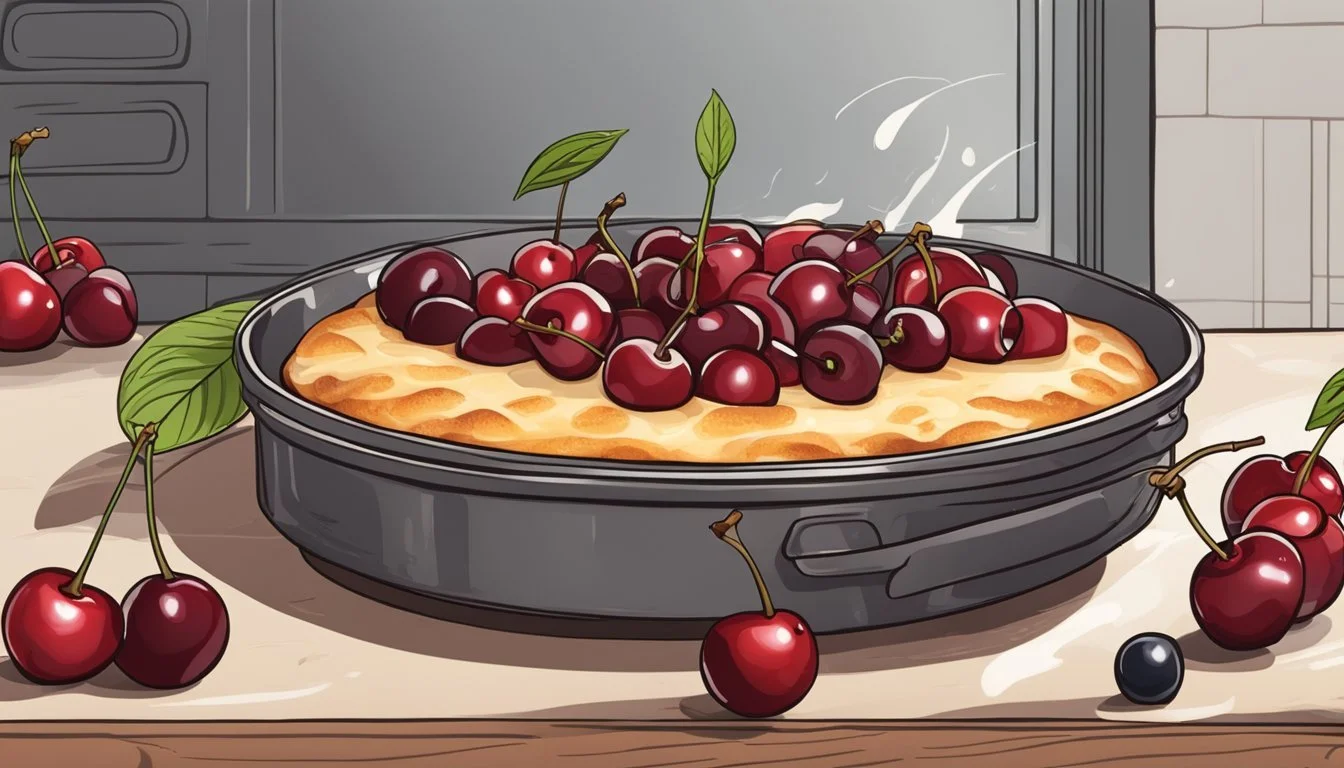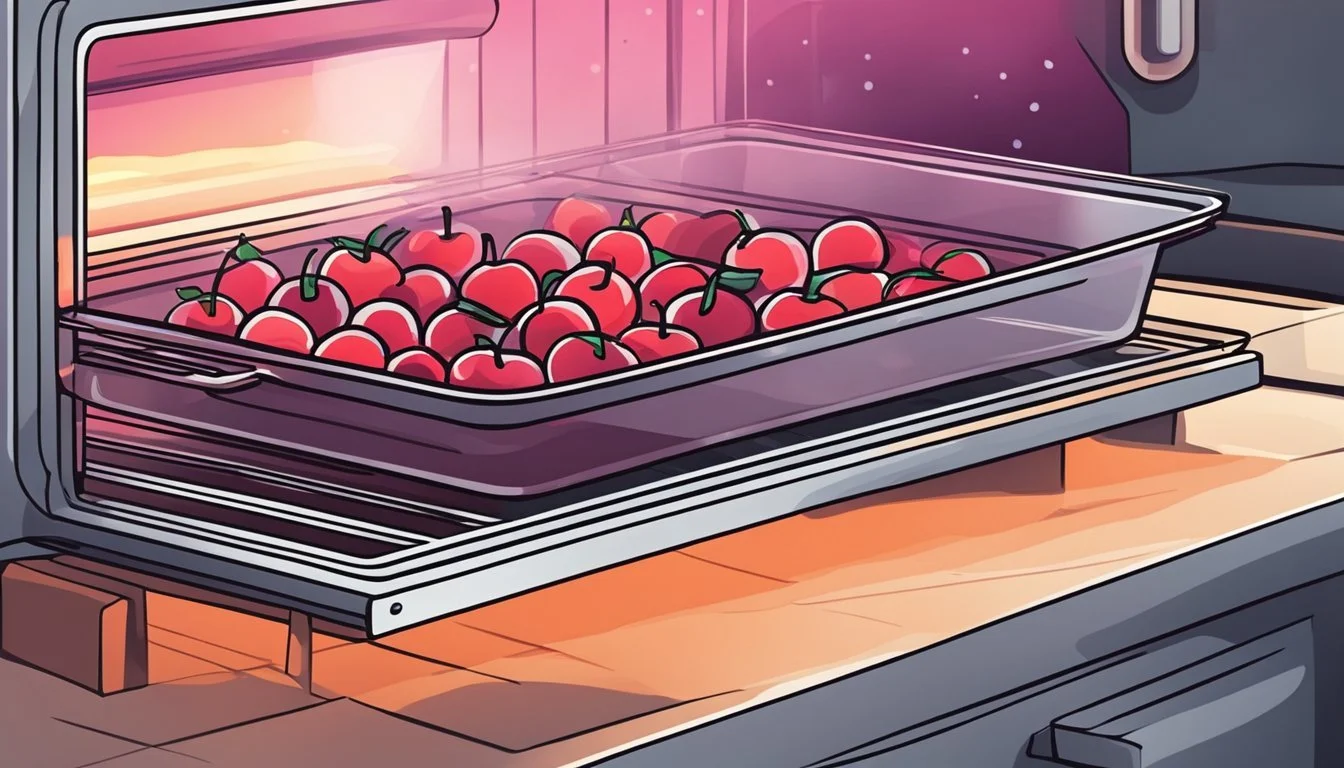Best Way to Reheat Cherry Clafoutis
Ensuring Perfect Texture and Flavor Preservation
Cherry clafoutis is a traditional French dessert known for its creamy, custardy texture and juicy fruit filling. This rustic dish combines the sweetness of ripe cherries with a dense yet soft pancake-like batter, making it a favorite in both French cuisine and beyond. Often enjoyed fresh from the oven, its allure doesn't fade when served as leftovers – if it's reheated properly. Reheating this comforting dessert without compromising its delicate texture is crucial to experiencing the full pleasure of its distinctive flavor and mouthfeel.
The key to successfully warming up a slice of cherry clafoutis lies in the method used, which should be gentle enough to preserve its moisture while reviving the dish's homely warmth. Precision in temperature and timing ensures that the cherries maintain their juiciness, and the signature custard stays tender and luscious. With a proper approach, the clafoutis can be brought back to a state that closely resembles its freshly-baked perfection.
Reheating cherry clafoutis can indeed be as much of an art as making it from scratch. It's not merely about getting it warm, but also about retaining the dessert's classic charm. Fans of this beloved recipe need not worry about sacrificing quality for the sake of convenience. With thoughtful techniques, they can bring leftover clafoutis back to life, ready to be savored with each bite as delightful as the first.
Understanding Clafoutis
In exploring the best ways to reheat Cherry Clafoutis, it is essential to have a thorough comprehension of the dessert's identity, variations, and elemental components.
What Is Clafoutis?
Clafoutis is a French dessert that combines the characteristics of a custard and a cake. Originating from the Limousin region of France, it is often made by baking fruit, most commonly cherries, in a custard-like batter. The dessert is celebrated for its creamy texture and bursts of fruit flavor. Cherries are traditional, but other fruits such as plums, apples, pears, blackberries, and raspberries can also be used.
Clafoutis Vs. Flan and Dutch Baby Pancake
Although Clafoutis may remind some of a flan due to its custardy texture, they are distinct; flan is primarily a caramelized custard dessert without a flour mixture. In contrast, Clafoutis has a foundational structure leaning towards a dense cake. It differs from a Dutch Baby Pancake as well, with the pancake being more airy and Clafoutis being notably denser and more custard-like due to a higher ratio of eggs to flour.
Ingredients in Cherry Clafoutis
The basic ingredients in Cherry Clafoutis typically include:
Eggs: For binding and creating the custard texture
Sugar: To sweeten the dish
Milk: The liquid base for the batter
Flour: Provides structure to the dessert
Cherries: Traditionally, the pits are left in for added flavor
Flavorings: Such as vanilla and almond extracts for enhanced aroma
Cherry Clafoutis balances the richness of the custard with the juiciness of the cherries, making it a quintessential French dessert appreciated for its simplicity and rustic charm.
Preparation Essentials
Before diving into the reheating process, it is crucial to ensure that the original cherry clafoutis is prepared with attention to components crucial for its custardy texture and vibrant cherry flavor.
Choosing the Right Cherries
For the ideal balance of tartness and sweetness, sweet cherries are often recommended. One should look for cherries that are plump, shiny, and deep red to purple in color. Pitted cherries are essential; pits must be removed to ensure a pleasant eating experience and to protect the texture of the clafoutis.
Creating the Batter
A smooth, well-integrated batter is foundational for a custardy clafoutis. It generally includes:
Eggs: They act as a binding agent giving the clafoutis its structure.
Sugar: Enhances the flavor of the cherries and contributes to the custard's richness.
Milk and Cream: These liquids provide moisture and fat, aiding in the creamy texture.
All-purpose Flour: Gives body to the clafoutis without overpowering other ingredients.
Butter: A small amount is typically used to grease the baking dish. It adds flavor and assists in preventing the clafoutis from sticking.
Extracts: Both vanilla and almond extract are used to infuse the batter with depth of flavor, complementing the cherries.
The batter should be blended until smooth, ensuring the flour is fully integrated with no lumps.
Baking Dish Selection
The choice of baking dish affects how the clafoutis cooks and browns. An oven-safe dish, typically round and at least 1.5 inches deep, is ideal. Materials can range from glass to ceramic to cast iron, which all promote even baking. Prior to adding the batter, the dish should be thoroughly greased with butter and optionally dusted with flour for easy removal after baking. The size of the dish should allow the batter to cover the cherries in an even layer, contributing to a cohesive texture throughout.
Baking Techniques
When reheating cherry clafoutis, maintaining its creamy consistency and the integrity of the cherries is essential. The techniques discussed will provide the best approach to preserve the dessert's desired qualities during reheating.
Achieving the Perfect Texture
For a clafoutis that is custardy and soft, one must focus on gentle and even heat distribution. The egg-based batter is sensitive, and overheating can cause it to become rubbery rather than maintaining the desired creamy texture. For optimal results, reheat the cherry clafoutis in a preheated oven at a moderate temperature, around 300°F to 325°F (149°C to 163°C), which is sufficient to warm through without overcooking the custard.
Temperature and Cook Time Considerations
Careful management of temperature and cook time is key to avoid overbaking. The clafoutis should be checked regularly during reheating, as total time may vary depending on the size and depth of the dish, and any individual oven’s characteristics. A period of 10-20 minutes is typically adequate. Here is a simple reference table:
Clafoutis Size Temperature Approximate Cook Time Full Size 325°F 15-20 minutes Individual 325°F 10-15 minutes
Testing for Doneness
To determine if the reheated clafoutis has reached the proper temperature without compromising its texture, insert a toothpick into the center. It should come out clean, indicating the custard has set. The surface should look slightly golden brown, a sign of gentle reheating, while the cherries remain juicy. One should avoid waiting for a deep golden color, as this may suggest overbaking, resulting in a compromised texture.
Reheating Cherry Clafoutis
When reheating Cherry Clafoutis, maintaining its delicate custardy texture and the integrity of its juicy cherries is crucial. The following methods preserve the quality of this French dessert.
Preparing Clafoutis for Reheating
One should allow the Clafoutis to reach room temperature before reheating to ensure even warmth throughout. If it was refrigerated, taking it out 20-30 minutes prior to reheating is advisable.
Room Temperature:
Take out of fridge 20-30 minutes before reheating.
Best Methods to Reheat
Oven Method:
Preheat oven to 350°F (175°C).
Place Clafoutis on a baking dish.
Cover loosely with foil to avoid over-browning.
Heat for 10-15 minutes or until lukewarm.
Microwave Method:
Place a slice of Clafoutis on a microwave-safe dish.
Cover with a microwave-safe lid to retain moisture.
Reheat in 20-second intervals, checking after each to prevent overcooking.
Skillet Method:
Heat a non-stick skillet on low.
Add a small amount of butter to avoid sticking.
Place Clafoutis in skillet for a few minutes until warmed through, flipping once.
Reheating Guide Table:
Method Temperature/Setting Time Note Oven 350°F (175°C) 10-15m Cover with foil Microwave Medium power 20-sec intervals Cover with lid Skillet Low heat A few minutes Add butter, flip once
Avoiding Common Reheating Mistakes
Never reheat Clafoutis in a high-powered microwave setting or for too long to avoid rubbery custard.
Refrain from using a toaster oven, as it can dry out the Clafoutis and compromise its texture.
Do not attempt to reheat an entire Clafoutis in a skillet; work with single serving slices for optimal results.
Serving and Presentation
When reheating cherry clafoutis, the goal is to maintain its custardy interior and the juiciness of the cherries. Proper serving and presentation can enhance the eating experience, highlighting the dessert's textures and flavors.
Accompaniments and Toppings
Cherry clafoutis pairs beautifully with a variety of accompaniments and toppings. A dusting of powdered sugar is traditional and adds a sweet touch without overpowering the dish. For an added indulgence, a dollop of whipped cream can complement the custardy texture. Here are some suggestions for toppings that can elevate the serving of this dessert:
Powdered sugar: A light sprinkle
Whipped cream: A spoonful for creaminess
Additional berries: A scattering for added freshness
Fruit sauces: A drizzle for extra flavor
When it comes to fruit, adding a mix of berries such as raspberries, blueberries, or slices of stone fruit can provide a wonderful contrast and boost the dessert's visual appeal.
Plating Techniques
For an elegant presentation, consider plating individual portions of cherry clafoutis. The visual contrast between the dark cherries and the golden custard can be quite striking on a plate. Here are some plating tips:
Allow the dessert to cool slightly to ensure it can be cut neatly.
Use a sharp knife to divide into desired servings.
Gently lift each portion with a spatula to maintain the dessert's structure.
An expertly plated cherry clafoutis, complete with thoughtfully chosen toppings, makes for a delightful culinary experience both visually and taste-wise. Whether for a casual setting or a fancier occasion, each serving reveals the attention to detail in its presentation.
Nutritional Information
When considering the nutritional content of cherry clafoutis, one must be mindful of the caloric content primarily due to the sugar and custard components, as well as dietary considerations such as gluten content and the presence of amygdalin from the cherries.
Caloric Content
Cherry clafoutis generally comprises a mixture of cherries, sugar, milk, and a flour-based custard. The average serving can range between 300 to 600 calories, depending on the portion size and the specific recipe used. The caloric content is primarily driven by the sugar and fat content in the custard, as well as by the natural sugars found in the cherries.
Dietary Considerations
Sugar: Cherry clafoutis is a dessert that inherently contains sugar. Recipes typically call for both the natural sugar present in the fruit and added sugars that, together, contribute to the overall sweet taste.
Gluten: Given that traditional recipes include flour, cherry clafoutis usually contains gluten. However, it can be adapted using gluten-free flour for those with gluten sensitivities or celiac disease.
Amygdalin: Cherries, especially their pits, contain amygdalin, a compound that can produce cyanide. It's important to ensure all pits are removed to prevent the release of amygdalin when preparing the dessert.
Fruits: Cherries are the fruit of choice for this dessert, providing antioxidants and adding a burst of flavor as well as moisture, which helps maintain the custardy texture upon reheating.
Custard: The custard, a blend of dairy and eggs, adds protein to the dish but also contributes to the fat and cholesterol content. It's essential for achieving the classic creamy texture of the clafoutis.
In summary, cherry clafoutis offers an array of nutritional aspects to consider, from its calorie count to the presence of gluten and sugars. These factors should be weighed accordingly by those with dietary restrictions or specific nutritional goals.
Variations of Clafoutis
Clafoutis offers versatility in its preparation, with the ability to substitute the classic black cherries for different fruits and to adapt the recipe to various dietary needs such as gluten-free and vegan diets.
Using Different Fruits
Clafoutis traditionally includes black cherries, but one can easily use alternative fruits to experiment with flavors. Stone fruits, like apricots and peaches, are excellent choices because they maintain their structure and offer a sweet-tart balance. These fruits can be used fresh or you could opt for canned when they are not in season. When using frozen fruits, it is best to thaw and drain them to prevent excess liquid from altering the consistency of the dessert.
Fruit Variations
Fruit Type Fresh Canned Frozen Cherries Recommended Drain well Thaw and drain Apricots Cut in halves Choose firm options Thaw and drain Peaches Slice thinly Remove excess syrup Thaw and drain
Creating Gluten-Free and Vegan Versions
For a gluten-free clafoutis, replace traditional flour with a gluten-free blend. Ensure the blend is suitable for baking, which typically includes a combination of rice flour, potato starch, and xanthan gum, to keep the texture as close to the original as possible.
To make a vegan clafoutis, substitute the eggs with a plant-based egg replacer, such as a flax or chia egg. The milk should be replaced with a non-dairy alternative, like almond or soy milk, which work well in baking. These substitutions allow those with dietary restrictions to enjoy clafoutis without compromising on the custardy texture that defines the dessert.
Substitution Guide
Ingredient Gluten-Free Option Vegan Option Flour Gluten-free all-purpose blend Same as GF option Eggs Use standard eggs Flax or chia egg Milk Standard or lactose-free milk Almond, soy, or other non-dairy milk
The key to successfully adapting clafoutis is maintaining the balance of wet to dry ingredients and ensuring that substitutions mimic both the structural and flavor profiles of the original components.
Storage and Shelf Life
Proper storage is crucial to maintain the quality of cherry clafoutis, with its custardy texture and fresh cherries. Two effective methods are refrigeration for short-term storage and freezing for longer shelf life.
Refrigeration Best Practices
To keep cherry clafoutis fresh, it should be refrigerated within two hours of baking. The clafoutis must be tightly covered with plastic wrap or stored in an airtight container to prevent it from absorbing other flavors in the fridge. They can refrigerate their dessert for up to three days, ensuring the custardy texture remains intact.
Temperature: Keep at 35°F to 40°F
Container: Airtight container or thoroughly wrapped in plastic
Freezing and Thawing Tips
For long-term storage, cherry clafoutis can be frozen, although this might slightly alter the texture. To freeze, the dessert should first be cooled completely and then wrapped securely in both plastic wrap and aluminum foil to avoid freezer burn. When ready to enjoy, they should thaw the clafoutis in the refrigerator—it is not recommended to microwave as it can unevenly heat and ruin the custard. Consuming the clafoutis within one month of freezing is advisable for the best quality.
Freezing:
Wrap: Plastic wrap + aluminum foil
Duration: Up to 1 month for optimal quality
Thawing:
Method: Refrigerator thawing
Do Not: Microwave to preserve texture
Clafoutis FAQs
What is cherry clafoutis? Cherry clafoutis is a traditional French dessert originating from the Limousin region. It combines juicy cherries with a custardy batter, resulting in a dessert that's somewhat reminiscent of a pancake, but with a unique texture.
How do you make cherry clafoutis? To make cherry clafoutis, one typically starts with fresh cherries that are layered in a greased baking dish. A batter made from common ingredients such as flour, sugar, eggs, and milk is blended until smooth and then poured over the cherries. Baking time varies but is usually between 35-45 minutes.
What ingredients are needed? The basic ingredients for cherry clafoutis include:
Cherries
Flour
Sugar
Eggs
Milk
Vanilla extract
Almond extract (optional)
Salt Some recipes may include kirsch (a cherry liqueur) to enhance the cherry flavor.
Does cherry clafoutis have a custardy texture? Yes, cherry clafoutis is cherished for its soft, custardy texture. Achieving this requires precise baking time — long enough to set the custard but not too long as to make it rubbery.
What is the best dish to bake clafoutis in? A round or oval baking dish, typically 9 inches in diameter, is most often used. One can also utilize a cast-iron skillet or cake pan.
What prep time should I expect? Prep time is usually minimal, about 10-15 minutes. The simplicity of the recipe makes it a favorite to share on social media channels like Instagram.
How many servings does a clafoutis make? A standard clafoutis recipe typically yields 6 to 8 servings, making it an ideal dessert for family gatherings or small dinner parties.
Remember to let the clafoutis cool slightly before serving to allow the dessert to set properly, which is crucial for maintaining the iconic custardy texture.
Additional Resources
When seeking further guidance on reheating cherry clafoutis, enthusiasts and bakers may find the following resources beneficial:
Social Media Platforms:
Instagram: A treasure trove for visually appealing content, Instagram offers a plethora of posts under hashtags like
#cherryclafoutis. Users can explore images and videos for reheating tips from experienced bakers.
Culinary Websites:
Recipe Blogs: Many food bloggers provide detailed recipes along with reheating instructions to maintain the dessert's texture. They often share personal experiences and adjustments for various cook times.
Online Culinary Guides: Websites dedicated to baking tips offer comprehensive techniques that include the do's and don'ts of reheating clafoutis without compromising its quality.
Cookbooks:
Traditional and modern cookbooks often contain sections on dessert preservation and reheating methods, including tips for dishes like cherry clafoutis.
Community Forums:
Platforms such as Reddit and cooking forums allow for discussion and exchange of information on the best practices for baking and reheating delicate desserts (What wine goes well with desserts?).
YouTube Channels:
A visual learner may prefer following video tutorials from experienced chefs, providing step-by-step guidance on the entire process from how to make cherry clafoutis to achieving the perfect serving temperature upon reheating.
For those looking to perfect their cherry clafoutis recipe, these additional resources can be instrumental in creating a delightful dessert that retains its juicy cherries and creamy texture even after reheating.

